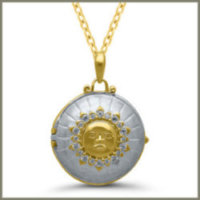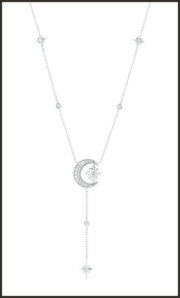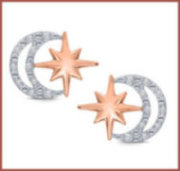Growth Beyond Bridal
Over 40 percent of older or single women buy their own diamond jewelry.
People are continuing to get married later in life, finds the WeddingWire.com Newlywed Report 2019, largest study of today’s wedding planning journey in the U.S. surveying over 18,000 newlyweds married in 2018. The average age to marry is 33 as couples prioritize education and careers, even travel.
 Realizing this, the diamond and jewelry industry the past two years has been advocating messages beyond bridal. “Real is Rare” by the Diamond Producers Association (DPA) has been promoting diamonds as gifts of love for moments together, gifting to family, and as a celebration of self with a robust social media campaign.
Realizing this, the diamond and jewelry industry the past two years has been advocating messages beyond bridal. “Real is Rare” by the Diamond Producers Association (DPA) has been promoting diamonds as gifts of love for moments together, gifting to family, and as a celebration of self with a robust social media campaign.
Today, only about 30 percent of those aged 17-37 are married, which is 40 percent fewer than Boomers at the same age, according to DPA research. One in five say they don’t intend to get married at all. For an industry where so much sales volume is driven by engagement jewelry, jewelers must learn how to relate and adapt their merchandise and marketing to our changing lifestyles and norms.
DPA data reveals that 32 percent of all natural diamonds sold in the U.S. last year were self-purchase, a third of which went to millennials, and a third to married women not waiting for their partners to gift them with diamonds. Over 40 percent of older or single women buy their own diamond jewelry.
“Millennials are buying fine jewelry as everyday luxury, rather than special occasion statement pieces,” says Valerie Fletcher, vice president of design and product development for the NYC-based Original Designs Inc. (ODI). Contemporary styling with an edge, like changing the orientation of a setting east-west instead of north-south or using color in place of white diamonds.
They also are responding less to big name brands, and more to companies and styling that represent their lifestyle  and values, tells Fletcher. “They care about the earth, climate and sustainability. Nature themes like bee, flower, sun, moon, and star have been very successful, as well as jewelry that supports a cause.”
and values, tells Fletcher. “They care about the earth, climate and sustainability. Nature themes like bee, flower, sun, moon, and star have been very successful, as well as jewelry that supports a cause.”
Know the Market
Theresa Namie, merchandise manager for the Minneapolis Minnesota-based manufacturer, Ostbye advocates the importance of consumer market research for jewelers, as the DPA has done, and The Plumb Club, recently commissioning the Italian trends forecasting firm, The Futurist.
Among the findings, Namie says is that pendants are identified as the biggest seller in this category. Research shows this demographic is more likely to buy designs that can be added to and layered on.
In the last couple of years diamond fashion demand has been on the rise, particularly for diamond pendants, as well as bracelets and earrings. “There is not one design trend captivating the market at this time,” says Robin Gandhi for Aneri Jewels and Laxmi Diamonds in New York City. “The demand is for jewelry styles that are more casual and personal, jewelry you can live in that goes from day to night, casual to couture. This direction is fueled by trends for individuality, creativity and informality in our society.”
 Millennials are driven to get things done with a digital-first mindset. Today’s consumers, says Gandhi, are media-savvy, socially empowered, and multicultural and brands must reach out to them where they are in the way they want to be connected.
Millennials are driven to get things done with a digital-first mindset. Today’s consumers, says Gandhi, are media-savvy, socially empowered, and multicultural and brands must reach out to them where they are in the way they want to be connected.
The Plumb Club’s research, Gandhi references, produced an initiative where manufacturing members created pieces for a group collection, trademarked and promoted as Radiant Universe. It has ignited a lot of excitement, he says, in collectively promoting identified consumer trends, notably the Polar Star, and celestial motifs like the sun and moon.










